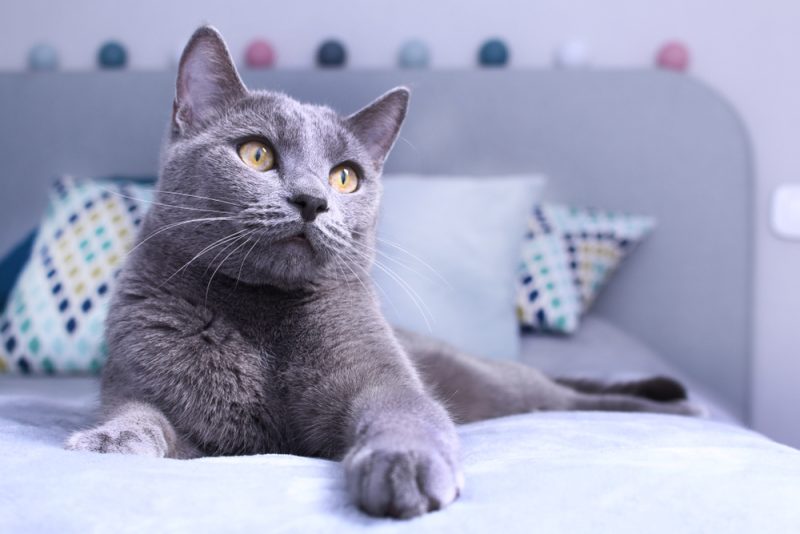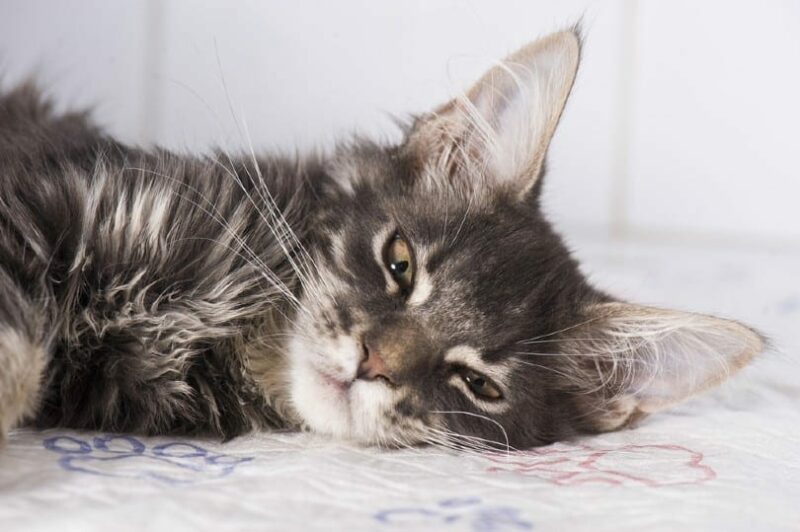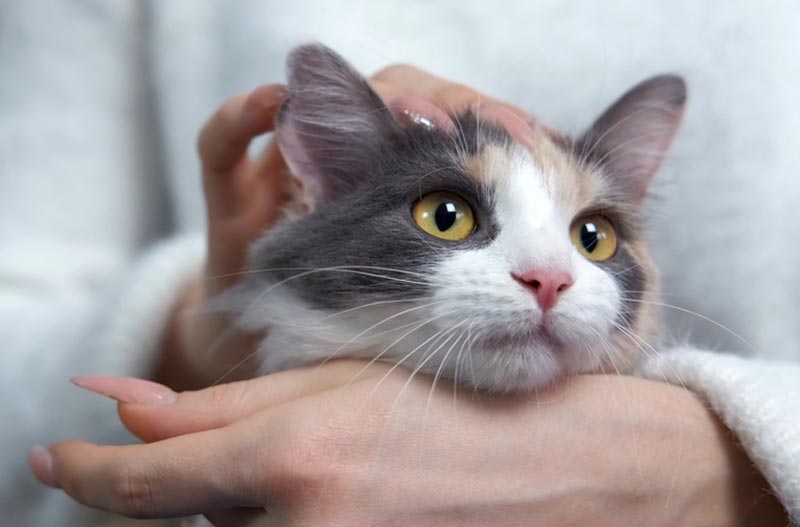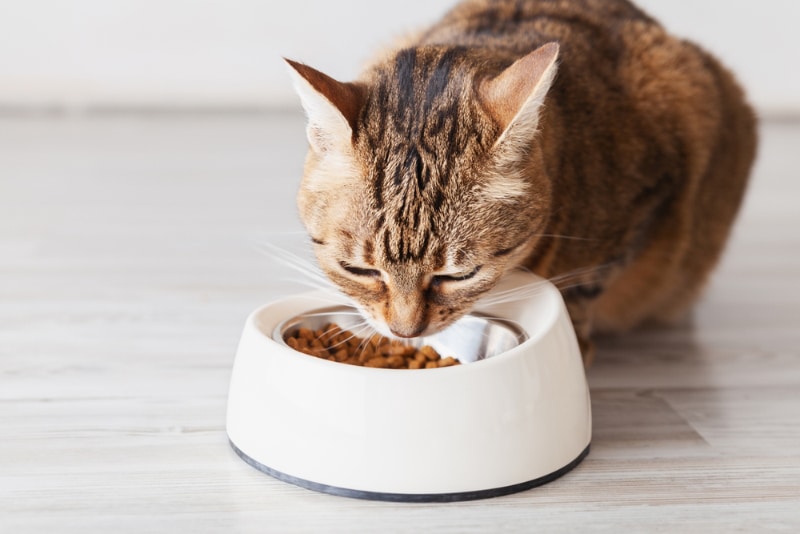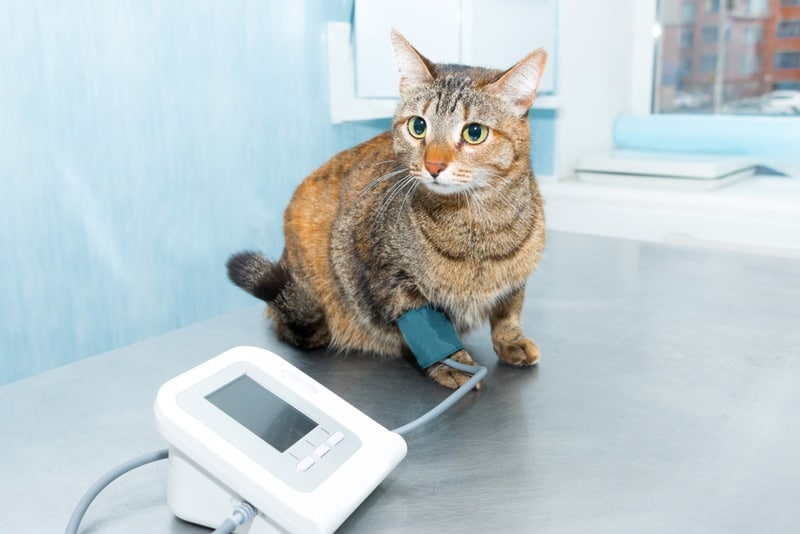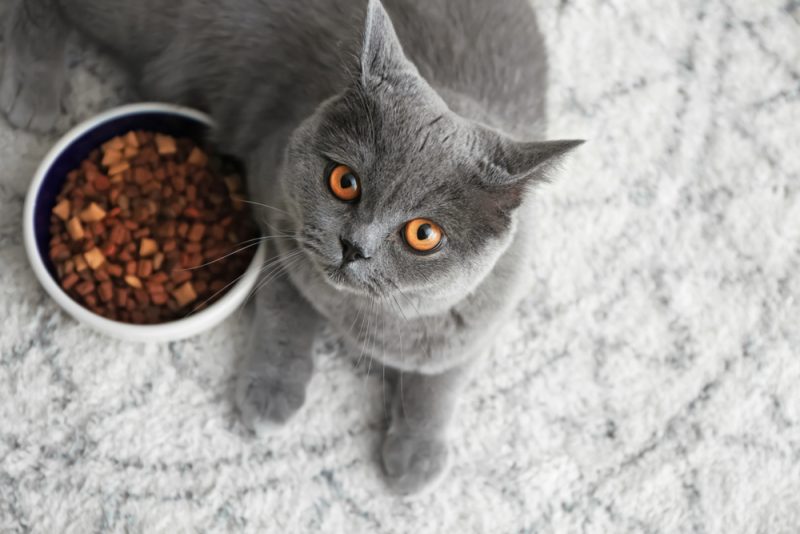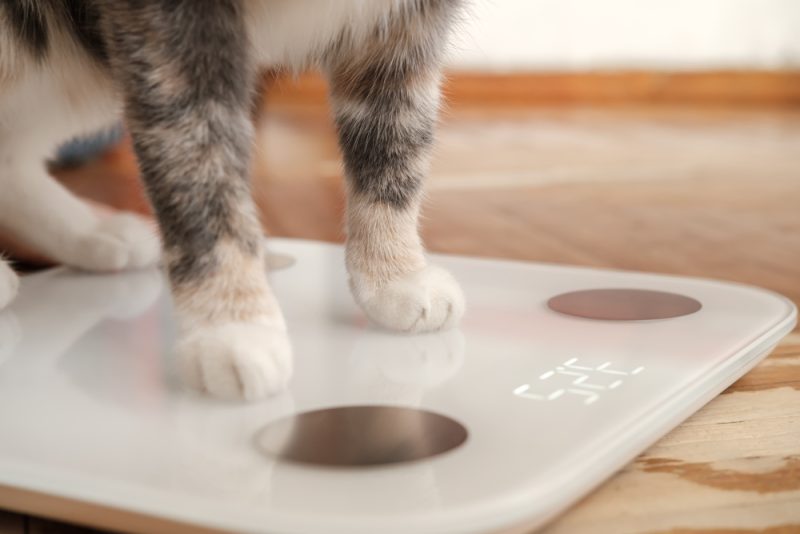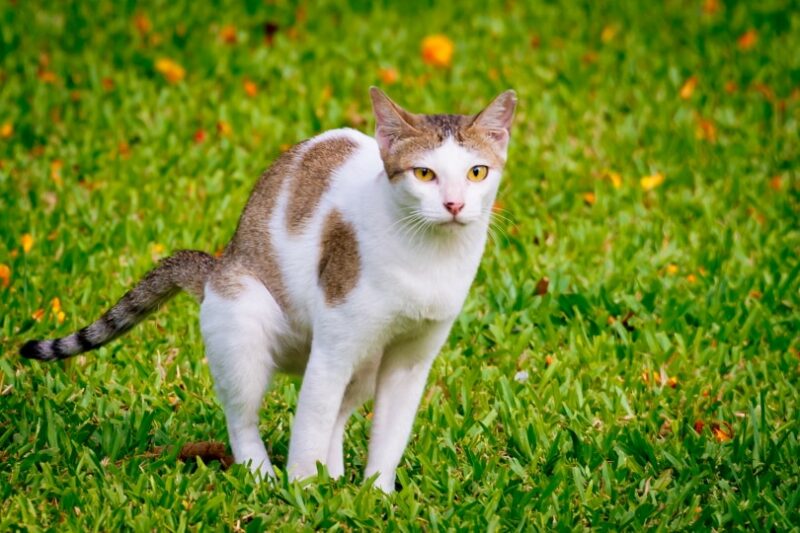Chylothorax means the presence of chyle in the chest. This is a medical condition that occurs when chyle accumulates in the chest cavity where the heart and lungs are situated. It is, unfortunately, a complex and poorly understood disease.
Read on below to find out more about this condition in cats.

What Is Chylothorax in Cats?
Chyle is a milky-like fluid that contains fats and lymph from the intestines. Chyle drains from the small intestine into the lymphatic system during digestion. It is transferred to circulation via an important duct called the thoracic duct. This is the main trunk of the lymphatic system.
Lymph is a watery fluid that resides in the lymphatic system and transports nutrients and important proteins to the tissues of the body.
When chyle is being transported around the body, it can leak into the chest cavity. Here, it accumulates and causes pressure on the heart, lungs, and other important structures in this location. Often large accumulations of chyle can block or occlude important lymphatic vessels. This results in them swelling and dilating and in turn, this causes damage to the tissue that lines the inner chest cavity. The tissue becomes inflamed and eventually scar tissue forms. This restricts the movement of the lungs and causes breathing difficulties.
Certain breeds of cats such as Siamese and Himalayan seem to be predisposed to this condition, although it can affect any breed. Older cats appear more at risk of developing the condition.
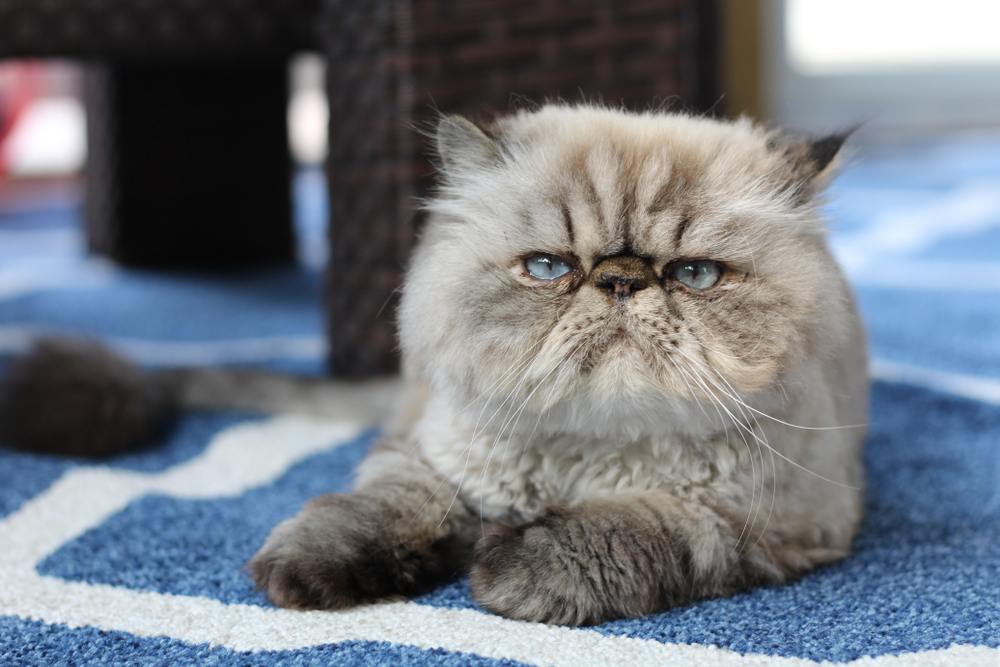
What Are the Signs of Chylothorax in Cats?
Clinical signs of chylothorax vary depending on how severe the condition is and what the underlying cause of the chylothorax is. Clinical signs can also depend on how quickly the fluid has accumulated.
- Increased breathing rate
- Breathing difficulties
- Lethargy
- Coughing
- Pale gums
- Irregular heart rate and rhythm
- Muffled heart sounds on auscultation
- Changes to lung sounds on auscultation
- Increased effort when breathing (sucking in the stomach)
- Fever (in some cases)
- Difficulty resting/reluctance to lie down
- Decreased exercise tolerance
- Weight loss
- Reduced appetite/off food completely
Usually, the first clinical sign is breathing difficulties, however, if the fluid has accumulated gradually from a small leak over a long period of time, other clinical signs may present first such as weight loss or lethargy. These are much more subtle and sometimes harder to spot.
If you are concerned about the health and well-being of your pet, we recommend getting in touch with a vet for guidance.
If you need to speak with a vet but can't get to one, head over to PangoVet. It's an online service where you can talk to a vet online and get the advice you need for your pet — all at an affordable price!

What Are the Causes of Chylothorax in Cats?
There are many different causes of chylothorax. Unfortunately, a lot of cases are thought to be idiopathic, which means the cause is unknown. This can make diagnosis very challenging.
- Congenital abnormalities. This is very rare; however, some cats are born with congenital defects in the lymphatic system that can predispose them to chylothorax.
- Any sort of injury to the chest cavity can cause damage to the thoracic duct. This leads to chyle leakage and the accumulation of fluid in the chest cavity. Injuries sustained in road traffic accidents or falls from a great height are commonly the types of injury that result in chylothorax.
- Increased pressure. Any condition that increases the pressure in the thoracic duct or the vent cava (which is a large vein that carries deoxygenated blood into the heart) can have a negative effect on chyle drainage and cause a build-up. Conditions such as tumors in the chest, congestive heart failure, blood clots in peripheral circulation, heartworm infestation and fungal infections can all cause this increase in pressure described.
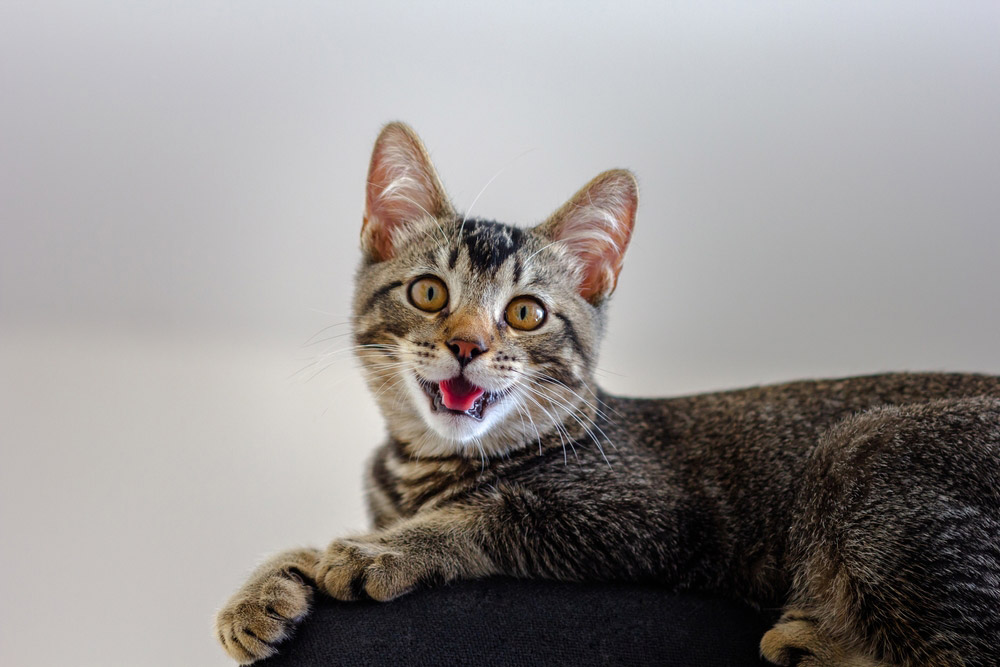
Diagnosis of Chylothorax in Cats
For a definitive diagnosis of chylothorax in cats, your vet needs to identify the presence of fluid in the chest. They will then need to analyze the fluid to confirm that it is chyle as there are many other types of fluid that can accumulate and start problems.
Your vet will start by performing a physical exam and taking a full history from you. They may want to take a blood test and urine sample to assess white and red blood cell counts and to check organ function.
Chest X-rays are usually the next step. Your vet will be able to see if there is fluid on the chest, assess the size of the heart, and look at the other structures in the chest cavity. It is not possible to determine the type of fluid present using an X-ray, but the presence of fluid will be obvious.
An ultrasound scan may be useful to visualize the thoracic duct and check if there are any abnormalities present. An ultrasound of the heart and surrounding vessels is also useful to identify any abnormalities. In some cases, CT scans may be required for a more detailed analysis. This can be useful for locating tumors.
If the presence of fluid has been identified, the next step is to sample the fluid. This is done by a process called thoracocentesis. Your vet will insert a small needle through the chest wall to draw away a sample of the fluid that has accumulated. Once the sample has been obtained, it can be analyzed. Your vet will be able to identify the cells present and determine what type of fluid has accumulated. The color of the fluid will also give your vet clues as if there is a milky white or pink-tinged fluid, this is highly suggestive of chylothorax.
Sometimes it is helpful to perform additional tests on the fluid sample such as measuring triglyceride levels. Chyle has a very high content of triglycerides compared to other fluids that may accumulate in the chest cavity. It is also possible to count the cell numbers and the level of certain proteins. This gives your vet more information about the nature of the fluid.
How Do I Care for a Cat with Chylothorax?
The treatment for chylothorax largely depends on the severity of the condition, the underlying cause (if it has been identified), and the general health of the cat.
Upon diagnosis, immediate relief in the form of thoracocentesis is typically prioritized. It is important to remove the fluid as quickly as possible as it will put pressure on organs in the chest cavity and compromise the function of the lungs. Your vet will use a small needle to remove excess fluid directly from the chest cavity. This can provide immediate relief from any respiratory distress your cat may be experiencing, and it will enable them to breathe easier. Unfortunately, this does not treat the underlying cause, so it is only a temporary measure. Frequently, the fluid will re-accumulate.
Your vet may also recommend a change in diet. This usually involves reducing dietary fat intake. Chyle is rich in fat, therefore reducing the fat in your cat’s diet can help decrease chyle production and slow down the fluid buildup. Some medications can be used depending on the underlying cause. Drugs such as diuretics can help to promote fluid removal from the chest. If there is an infection present, antibiotics will be prescribed.
Surgery is often an option if the fluid keeps re-accumulating after thoracocentesis.
One surgical option is thoracic duct ligation. This involves tying off (ligation) of the thoracic duct. This redirects the flow of chyle to alternate routes and prevents it from leaking into the chest cavity.
In some cases, a pericardiectomy is performed as well as thoracic duct ligation. This involves the removal of the sac that surrounds the heart. It is thought to improve the success rate of thoracic duct ligation surgery.
In these cases, supportive care is important too. This can involve oxygen therapy, pain relief, and nutritional support. All cats will require long-term monitoring to check for recurrence of the fluid and any potential complications.

Frequently Asked Questions (FAQ)
Is it possible to prevent chylothorax in cats?
It is difficult to prevent chylothorax in cats. A large proportion of cases are idiopathic which means they have unknown origins. Keeping your cat in the best health possible by regularly visiting your vet for checkups can help. This allows for early detection of potential health issues that may lead to or contribute to chylothorax. Feeding your cat a balanced diet without excessive amounts of fat will also help to maintain good health.
Keeping your cat in a safe environment where they are less likely to injure themselves will reduce the risk of trauma to the chest.
Is chylothorax painful for cats?
Chylothorax itself is not considered to be painful. However, complications that arise from the accumulation of fluid in the chest cavity can cause discomfort and stress.
What is the prognosis for a cat with chylothorax?
The prognosis is good if the chylothorax is treated and the underlying cause is addressed. In cases of idiopathic chylothorax, the underlying cause is not known so these cases have a poorer prognosis and the likelihood of it recurring is high.
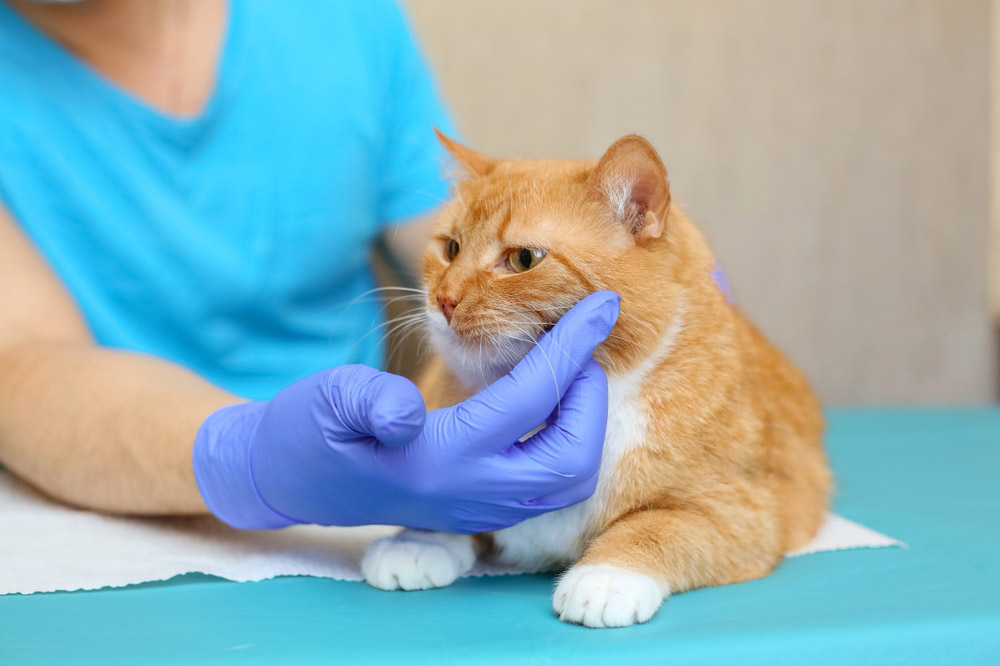

Conclusion
Chylothorax in cats is a relatively rare condition that is characterized by the accumulation of chyle in the chest cavity. There are different treatment options, but many will have a poor success rate if the underlying cause is not identified or treated. The success rate for the treatment of chylothorax depends on the severity of the disease and underlying health issues. Early diagnosis is crucial for successful management. If you are concerned that your cat is showing any clinical signs of chylothorax, speak to your vet immediately.
Featured Image Credit: megaflopp, Shutterstock




